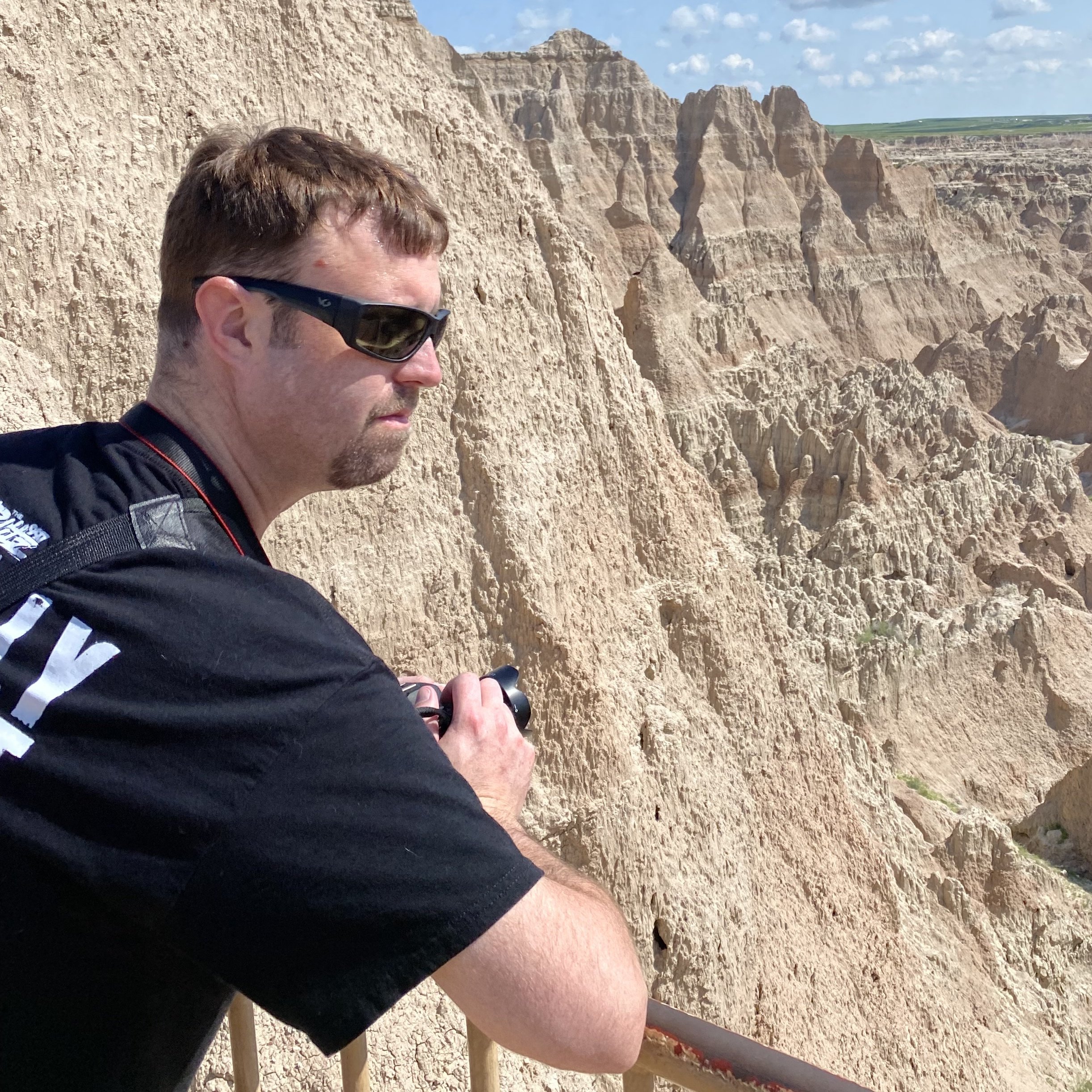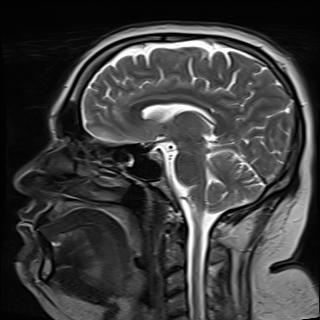No if I have to keep fixing it , it is not worth my time.
I installed owncloud years ago and came to the same conclusion and just got rid of it. I use syncthing nowadays though its not the same thing.
Yep, I’ve adapted all of my setup to syncthing, and never looked back.
Any guidance on this? I looked into Synthing at one time to backup Android phones and got overwhelmed very quickly. I’d love to use it in a similar fashion to NextCloud for syncing between various computers too.
Well, it works in a different way than NextCloud. You don’t have a server, instead you just make a share between your computers and they are all peers.
It takes some getting used to the idea, but it’s actually much simpler than NextCloud.
So if I wanted to sync photos from my phone to the computer, then delete the local copies on my phone to save space, that would not work?
E: But keep the copies on the computer, of course
You would have to move them into some folder you are not syncing.
@squidspinachfootball @marcos Syncthing syncs. It does one way syncs, but if your workflow is complex and depends on one way syncs that’s probably not what you want.
Sync things between operational systems, then replicate to nonoperational systems, and backup to off site segregated systems.
It really wasn’t all that complicated for me. Install the client on two devices set a share up on one device go to the other device Hit add device put the share ID in. Go back to the first devices admin and say allow the share
I was very intimidated as well, I’ll try to simplify it, but as always check the documentation ;)
This is the process I used to sync between my Windows PC and Android phone to sync retroarch saves (works well, would recommend, Pokemon is awesome) I’ve never done it on a Linux, though i assume it’s not too different
https://docs.syncthing.net/intro/getting-started.html
I downloaded the Synctrazor program so that it would run in the tray, again I’m not sure what the equivalent/if this would be necessary on Linux.
No shade to the writers, but the documentation isn’t super noob friendly, as I figured out. I’d recommend trying to cut out all the fluff, and boil it down to bare essentials. Download the program (whichever one seems right for your device, there’s an app for Android) and follow the process for syncing stuff (I believe I used a video guide, but it’s not actually as complicated as it seems)
If you need specific help I’d be happy to answer questions, though I only understand a certain amount myself XD
I’m absolutely at that point with Nextcloud. I kind of didn’t want to go the syncthing route, but I’ll probably give it a shot anyway since none of the NC alternatives seem any better.
I tried nc it for a while I would have taken me till the end of days to import all of my files.
I suspect I could keep it running by doing lockstep backups and updates. But it was just so incredibly slow.
I just want something that would give me remote access to my files with meta information about my files and a good search index.
Pydio Cells/Seafile?
I’ll look at those ASAP, super hopeful
i have been running the new owncloud (ocis) and, with some quirks and very basic functionality, it’s been running for 2+ years and survived multiple updates without major complications
Came to same conclusion too
I dunno what you guys are doing that makes your nextcloud die without touching it. Mine runs happily until I decide to update it, and that usually goes fine, too. I don’t use docker for it, tho.
I dunno what you guys are doing that makes your nextcloud die without touching it
Mine runs happily until I decide to update it
I swear every update ends up breaking it and putting it into maintenance mode for me. This would then lead to 1-2 hours of going through previously visited links to try and figure out what fixed it previously. For me personally, it seems like it’s usually mariadb requiring a manual update that fixes it but it’s always a little scary.
I always run
occ upgradeandocc db:add-missing-indicesafter a package upgrade, just to be sure that I do not miss any database migrations. Using Archlinux I wrote a pacman hook so that it happens automatically.
Just dont update it then
It’s the containerization causing this imo. I also host nextcloud on bare metal and it’s quite stable
I’ve been reading nextcloud forums/reddit/lemmy/etc. for years now, and i feel like 90% of the problems are from people using docker or whatever easy one-click solution is out there
I’ve been running NC the old fashioned way for years now and i’ve never had problems of NC dying for no reason.
Have i had issues? Of course… Not not like the ones people keep coming here and shitting on NC
The only times i’ve had major issues and it was actually a problem with nextcloud, is buggy major version releases… So i never install a new major release until X.0.1 these days. Havent really had problems since
In my own personal experience, Nextcloud;
- Needs constant attention to prevent falling over
- Administration is a mess
- Takes far too long to get used to its ‘little ways’
- Basics like E2EE don’t work
- Sync works when it feels like it
- Updating feels like russian roulette
Updating from my experience is not Russian roulette. It always requires manual intervention and drives me mad. Half the time I just wget the new zip and copy my config file and restart nginx lol.
Camera upload has been fantastic for Android, but once in a while it shits its brains out thinking there are conflicts when there are none and I have to tell it to keep local AND keep server side to make them go away.
The update without fail tells me it doesn’t work due to non-standard folders being present. So, I delete ‘temp’. After the upgrade is done, it tells me that ‘temp’ is missing and required.
Other than that it’s quite stable though… Unless you dare to have long file names or folder depths.
This could be it, but I also remember reading once it might be something to do with php.ini timeout settings too
It’s like…having a toddler LMAO my little digital toddler lololol
Am i the only one left who doesn’t want a snap docker Kubernetes container and just installs nextcloud in a normal way and never had any problems?
Same here. I’m just installing it normally, and my nextcloud instance is just chugging along.
For me it’s the opposite. I tried to use nextcloud for years, installing the normal way, and it always broke for no reason. I just started using it on docker and it has been perfect, fingers crossed.
Interesting, when I used docker on a proxmox build, it would give me trouble. Once I installed it the normal way on an Ubuntu build, it was good to go.
I wonder why that is?
Fingers crossed that it continues to work for you in the current configuration!
Because when you’re using Docker, you shouldn’t use Proxmox. And to be fair, I don’t understand why people are using Proxmox at all.
I used Proxmox because it was free and open source with backup tools integrated into the system.
Same here, but after v25(?) it won’t update on my RPi 4 any longer, think they went 64 bit only?
Other than that no issues
This has been a serious concern of mine. In the event that I prematurely die I have everything set up with automatic updates, so that hopefully my family can continue to use the self-hosted services without me.
Nextcloud will not stop shitting the bed. I’d give it a few months at most if I died, at which point my family would likely turn back to Google Drive.
I’m looking for a more reliable alternative, even if it’s not as feature-rich.
I’ve told my wife and family that if something happens to me, they need to start migrating all their stuff off my self-hosted services to cloud services because its a matter of time before something fails and nobody’s around who knows or cares to fix it.
You don’t want your kids using a rope, so keep them away from linux.
My oldest kid is a senior in highschool and is starting to show some interest in Linux and this kind of stuff. I’m hopeful that I can change my tune soon and maybe have one of the kids to share a hobby with!
If you’re ok with just file storage sftpgo has been solid for me for years now. Does sftp ftp and WebDAV (like nextcloud). Webui isn’t as pretty but it’s fast. Mobile apps will be various sync apps with sftp or WebDAV support. On Android folder sync pro is pretty good for keeping documents and pictures backed up
The way that they do updates doesn’t make automated updates very easy. There are usually a few little nagging things that have to be done or changed and they don’t always seem to be the same. I just update manually and make sure I’ve got a good backup of all my family’s files.
None. I don’t make a habit of keeping “misbehaving” apps around. If I can’t get to the bottom of a specific issue that app is getting the boot from my stable.
I run it and mariaDB in docker and they run perfectly when left alone, but everything breaks horribly if I try to do an update. I recently figured out that you need to do updates for NC in steps, and docker (unRAID’s, specifically) defaults to jumping to the latest version. I think I figured out how to specify version now so fingers crossed I won’t destroy it the next time I do updates.
This is probably what I’m doing wrong. I’m using linuxserver’s docker which should be okay to auto update, but it just continuously degrades over time with updates until it becomes non-functional. Random login failures, logs failing to load, file thumbnails disappearing, the goddamn Collabora office docker that absolutely refuses to work for more than one week, etc.
I just nuke the NC docker and database and start from scratch every year or so.
You absolutely need to move from patch to patch and cannot just do a multiple version jump safely. You also need to validate the configs between versions, especially major release updates or you risk breaking. New features and optimizations happen and you also may need to change our update your reverse proxy configuration on update, or modify db table configuration (just puking this from memory as I’ve had to do it before). I don’t know that there’s automation for each one of those steps.
Because of that, I run nextcloud in a VM and install it from the binary package. I wrote a shell script that handles downloading, moving the files, updating permissions and copying the old config forward, symlinking and doing the upgrade. Then all I have to do is log in as administrator, check out the admin dashboard and make sure there aren’t new things I have to address in the status page. It’s a pain, but my nextcloud uses external db and redis and PHP caching so it’s not an easy out of the box setup. But it’s been solid for a long time once I adopted using this script.
Would love to take a look at that bash script (or at least a template of it) if you wouldn’t mind
Here you go:
There could probably be some additional refactoring here, but it works for my setup. I’m using default nginx paths, so they probably look different than other installs that use custom stuff like /var/www, etc.
Use it by putting it in a shell script, make it executable, then call it:
sudo scriptName.sh 28.0.1Replace the version with whatever version you’re upgrading to. I would highly recommend never upgrading to a .0, always wait for at least a .1 patch. I left some sleeps in the when I was debugging a while back, those are safe to remove assuming it works in your setup. I also noticed some variables weren’t quoted, I’m not a bash programmer so there’s probably some consistency issues that could be addressed if someone is OCD.
Thank you for taking the time ! This is a great resource
Sure! I’ll respond with a link in a bit.
For me everything works fine since years, EXCEPT collabora. I use onlyoffice now, it’s much faster and very stable
Yeah I don’t like auto upgrades. Everyone says it’s fine but that’s not my experience.
My stuff isn’t public facing so I’m not worried about 0-days
Only complaints I have with Nextcloud are that it’s slow and updates suck over the web interface. But apart from that it has been reliable. I’m not running it through Docker. In fact, my installation is so old that the database tables still have an
oc_prefix.They don’t anymore? XD
You might want to try migrating your nextcloud instance to postgres instead of mysql/mariadb. Many people says they get some big performance boost. I’m going to try it myself next weekend to see if it’s true.
+1 this is exactly my experience. My install must be 5-6 years old at this point and its on the rails. I’ve braved many php updates…
Mine is a snap install that started 3 years ago on virtual box and was ported over to proxmox. It has never broken, updates automatically, and generally seems to work just fine.
It doesn’t load instantly, but it doesn’t drag by any means.
When I first deployed Nextcloud, it was just like this. Random crashes, lockups, weird user signin issues, slow and clunky.
But one day it just started working and was super stable. I didn’t do anything, still not sure what fixed it lol.
I really don’t understand all those posts: I use nginx, apparmor, partially even modsecurity, I use collabora office official debian package, face recognition, email, update regularly (waiting for major upgrades for every app I use to be updated), etc. and literally never had a problem in the last 5 years except for my own experiment. True, only 5 people use my instance, but Nextcloud is rock solid for me
Likewise. I have been running it for years, almost no problem that I can think of. My setup is pretty vanilla, Apache, MySQL. It’s running in a container behind a reverse proxy. I keep it as up to date as possible. Only 3 people use mine, and I don’t use very many apps: files, notes, bookmarks, calendar, email.
I was trying for the 3rd time to install the collabora office app in nextcloud. I think it’s hilarious they know it’s going to time out and they give you a bogus command to run to fix it. So unnecessarily irritating.
I’ve been running nextcloud since before it was nextcloud. Was owncloud then moved to next cloud.
Another user put it best. It always feels 75% complete. Sync isn’t fast, gives errors that self correct when restarting the all. Most plugins are even more janky or feel super barren.
I wanted to like it so much but I stopped being able to trust most plugins which meant I had dedicated apps for those things and used nextcloud only for file sync.
If you only want file sync then seafile is vastly superior so that’s what I now have.
Sounds like a common software issue. All the features where developed to 80%, and then moved on to the next feature. Leaving that last, difficult, time consuming, 20% open and unfinished.
It’s the difference between more corporate or Enterprise projects and FOSS projects in a lot of ways. Even once that project matures and becomes a more corporate product the same attitude towards completeness and correctness tends to persist.
(not saying foss is bad, just that the bar tends to be lower in my experience of building software, for many legitimate reasons).
It’s “cultural” in a way depending on the project.
LibreOffice wants to call with broken rendering on Windows, but the changelog mentions new tasty features. But FOSS can do it, Debian can. Those project managers should learn from their approach, whatever it is.
Yeah, I wish Nextcloud focused more on the file manager side of their applications. I was using it on my TrueNAS instance and it seems like an unfinished product. E2EE is not enabled by default and looks like their implementation is not perfect either.
I have nextcloud running since nearly 5 years and it never failed once. Only dowtime is when the backup fails and somehow maintenance mode is still enabled (technically not a crash)
For those interested: Running in docker with mariadb in a stack, checking updates with watchtower everyday and pulling from stable, backups with borg(matic)
++same
Docker:nextcloud+mariadb+caddy
Always works great for me.
I just run it (behind haproxy on a separate public host) in docker compose w/ a redis container and a hosted postgres instance.
Automatically upgrade minor versions daily by pulling new images. Manually upgrade major versions by updating the compose file.
Literally never had a problem in 4 years.
I’m still too container stupid to understand the right way to do this. I’m running it in docker under kubernetes and sometimes I don’t update nextcloud for a long time then I do a container update and it’s all fucked because of incompatible php versions of some shit.
I don’t remember much about how to use kubernetes but if you can specify a tag like
nextcloud:28instead ofnextcloud:latestyou should have a safer time with upgrades. Then make sure you always upgrade all the way before moving to a newer major version, this is crucial.There are varying degrees of version specificity available: https://hub.docker.com/_/nextcloud/tags
Make sure you’re periodically evaluating your site with https://scan.nextcloud.com/ and following all of the recommended best practices.
Kubernetetes is crazy complex when comparing to docker-compose. It is built to solve scaling problems us self-hosters don’t have.
First learn a few docker commands, set some environment variables, mount some volumes, publish a port. Then learn docker-compose.
Tutorials are plenty, if those from docker.com still exist they’re likely still sufficient.
Yeah I’m only running it because truenas scale uses it
They have an "all in one" docker installer for the above because you are far from alone here.
Installed Nextcloud-AIO using the docker script, took about 4 - 5 terminal commands. Practically zero issues! Hopefully someone else can provide some help in the thread!
Do you have office set up in it?
I have it set up. Try the AIO docker image. Once you get it set up, it pretty much just works. You just pick which office suite you want, check a few optional features if you want 'em, and it handles the rest for you. Most importantly, the AIO image is from nextcloud. They test it, it always works because it is the blessed version from them. If you’re not a Linux guy, don’t try the other installation methods, they’re much, much more difficult.
I’ll give it a shot. I’ve tried so many different approaches already. I think I maybe tried to install AIO straight onto a linux vm; don’t recall how it got derailed. I did build a Lubuntu VM for experimentation. I really wanted to get an Ollama chatbot running to assist me in my future digital endeavors, but it just wouldn’t come together.
This is ultimately why I ditched Nextcloud. I had it set up, as recommended, docker, mariadb, yadda yadda. And I swear, if I farted near the server Nextcloud would shit the bed.
I know some people have a rock solid experience, and that’s great, but as with everything, ymmv. For me Nextcloud is not worth the effort.
If all you want is files and sharing try Seafile
That’s what I’ve got running now, and for me Seafile is been rock solid.





















